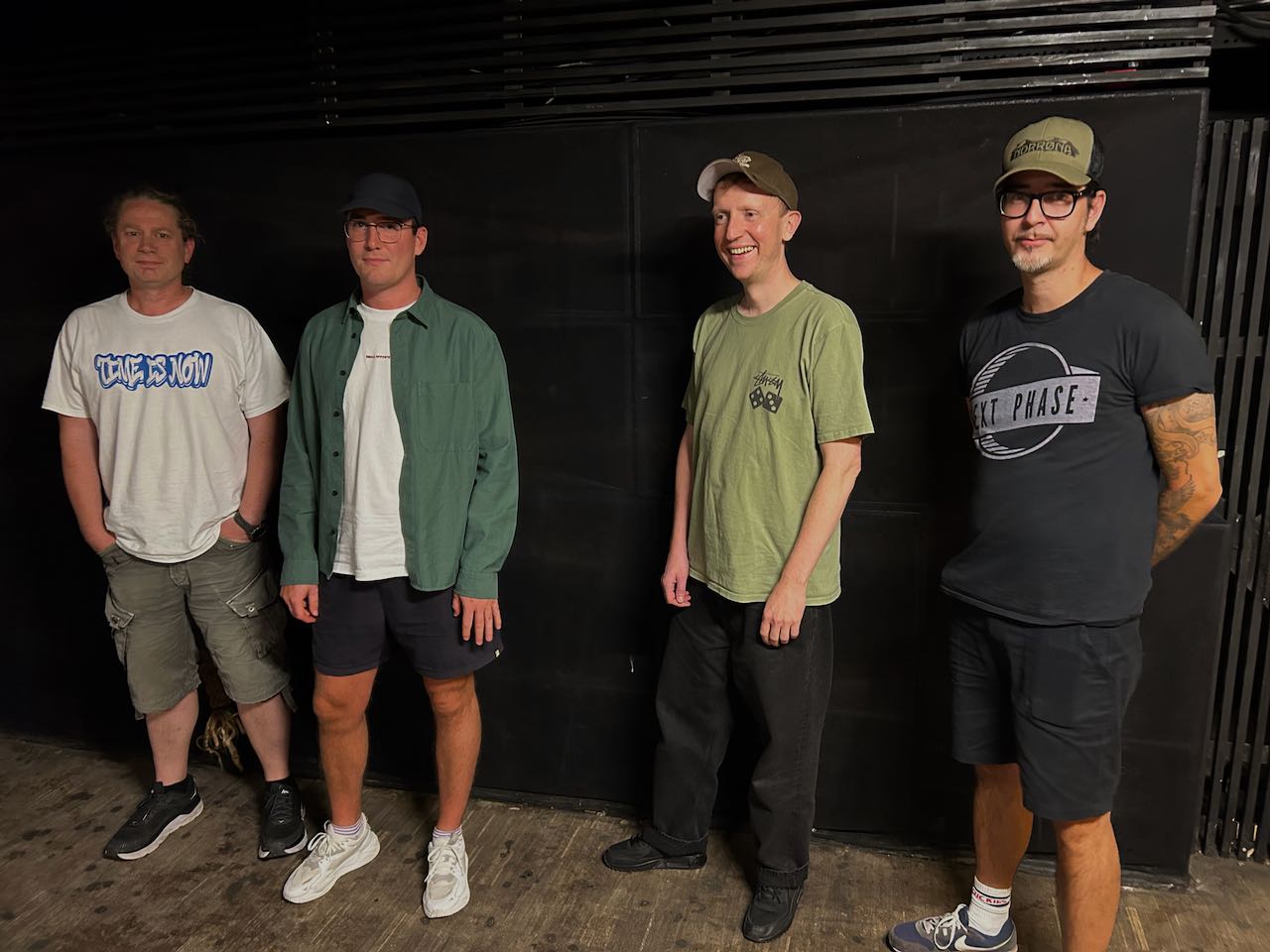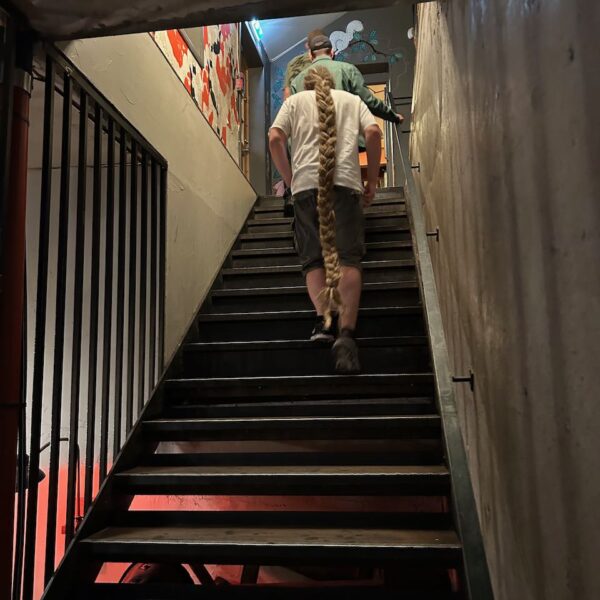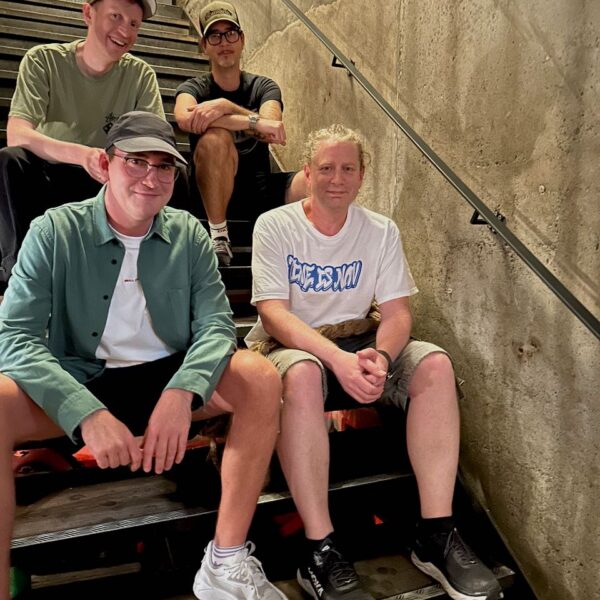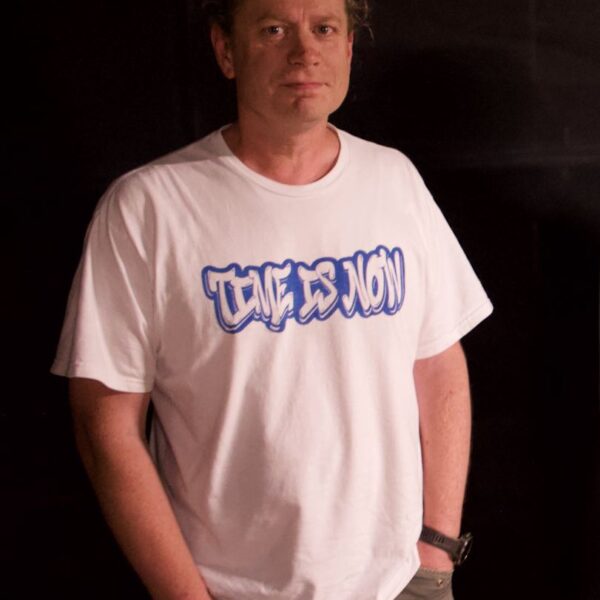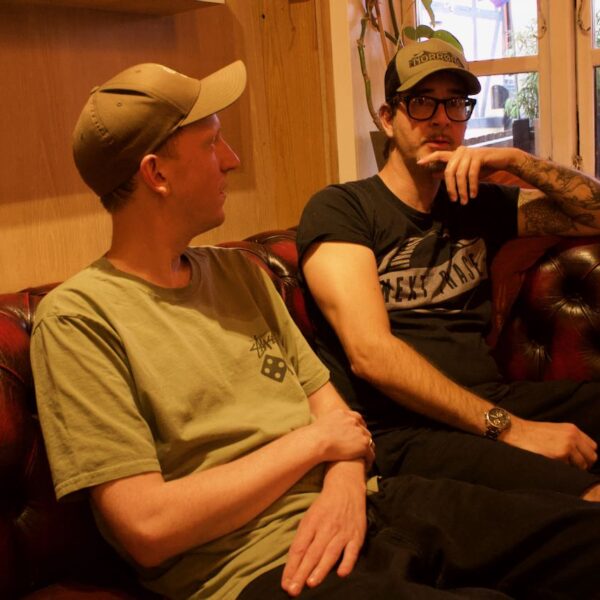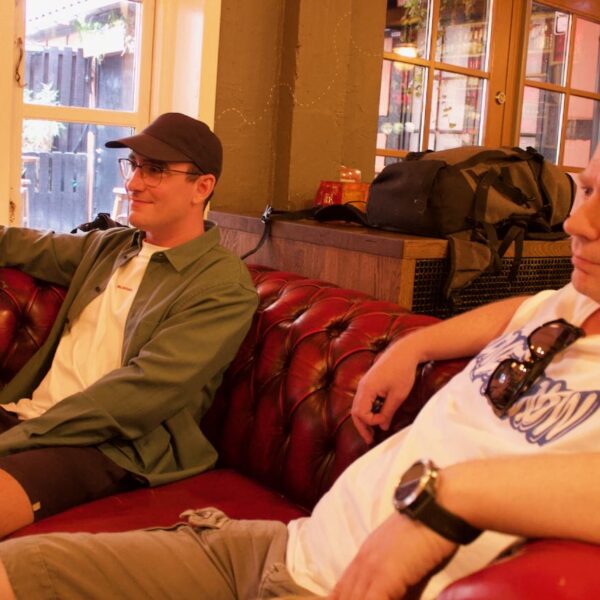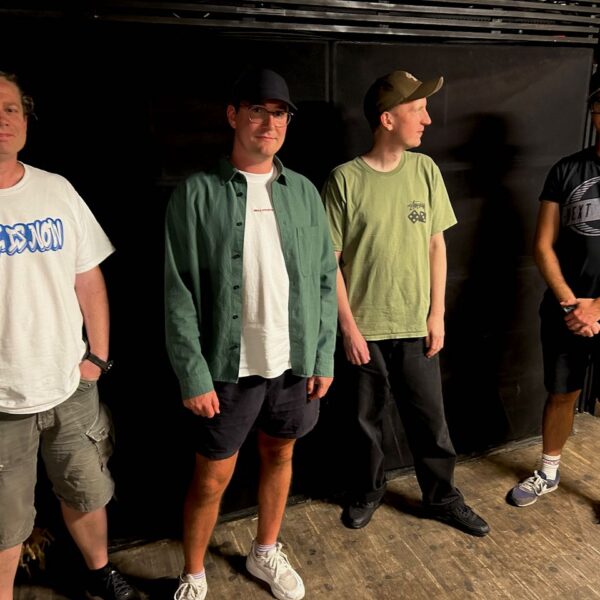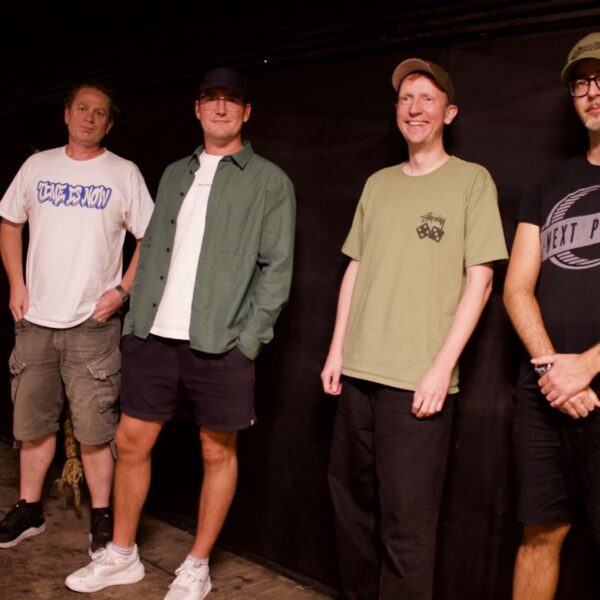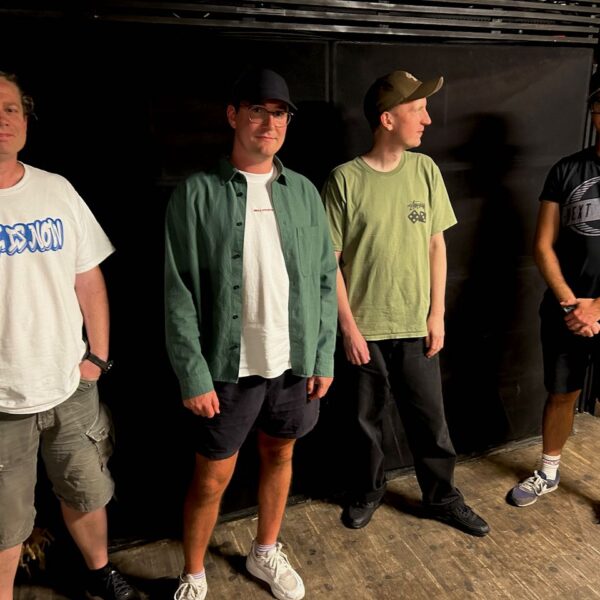We sat down with Bigup DJs to talk about the next wave of Drum & Bass and Jungle and their individual origins in an extensive interview with the Jaeger residents.
At Øya 2024’s Klubben stage the rain might be coming down, but the outside dance floor is full of animated bodies. People are stomping in time to 160 beats per minute and more as Sherelle plays an eclectic mix of Hardcore, Rave and Jungle. On occasion a hint of some familiar melody evokes a memory from another time, before it’s consumed by another pummeling break and a draconian kick.
Behind the DJ, Nia Archives is bouncing in unison to the rhythm, much like she did at her own set earlier that day for the Hagen stage, where she infused elements of Jungle and Drum & Bass with saccharine melodies of her vocals. I see Trond aka Drunkfunk from Oslo’s Bigup crew in the distance and I’ll see him again later that night playing a packed Jaeger basement ahead of the Metalheadz showcase. It becomes evidently clear that Drum & Bass, Jungle and those harder UK sounds are enjoying a moment right now.
It’s been on an upward trajectory for some years, but as DJs and artists like Sherelle and Nia Archives enjoy some much-deserved love from audiences the world over it appears this UK club phenomenon is reaching a height of popularity it hasn’t seen since it’s heyday, back in the early nineties when Metalheadz was in its infancy at London’s Blue Note club on Sundays.
There have always been dedicated audiences and scenes, but it’s remained an underground pursuit for the last two decades and it’s only now with a younger audience that we see it rising into public consciousness and even flirting with the mainstream as new artists like Kenya Grace and Luude breached the charts and old heads like Chase and Status found new fame and audiences off the back of the newly heightened popularity .
For every newcomer or resurgence however there have always been a steadfast few upholding the spirit and sound of Drum & Bass and Jungle and in Oslo some of those few are Bigup. Made up of Drunkfunk (Trond), Fjell (Niels), Tech (Svein) and Simon Peter, Bigup has become something of an institution when it comes to Drum & Bass and Jungle in the city. Alongside other crews like Skankin Oslo they’ve been sounding the clarion call for the genre consistently.
Since 2021 Bigup has been a steady presence at Jaeger, with the crew playing at least one Wednesday a month. While they’ve called Jaeger home, they’ve also become the stalwarts of the genre, playing individually at other events or concepts, like their warm-up for Andy C at Rockefeller. That event saw 750 enthusiastic patrons fill the venue in what Trond described as “the first time that there had been a Drum & Bass event at Rockefeller for a long time.
Alongside events like Chase & Status at Vulkan, which they believe could have filled that venue twice, Bigup believes that Drum & Bass and Jungle is “coming back again to a time when it was fresh. It has reached remote locations like Trondheim with Tronderbass. It is currently flourishing in Bergen, where Norwegian Drum & Bass legend Teebee is based. And it continues to only gather steam in Oslo with events like Mira Mark’s Ladies First; an all female lineup featuring everything from Drum & Bass to Garage.
In lieu of its current popularity there have always been people like Svein, Trond, Niels and more recently (well, 12 years going strong..) Simon, who have been the unwavering pillars of those genres and this community throughout it all.
In what has been a long-overdue event, we finally sit down with Bigup to talk about their origins, the current state of Drum & Bass and how we all got here.
Check out Bigup’s future dates here
Svein, as the most senior member, you probably have the first memories of Drum & Bass and Jungle making its way to Norway. Do you remember your first encounter with it?
Svein (Tech): I can ‘t exactly say. For me it started with the Rave / Hardcore scene, going over to Jungle and then Drum & Bass.
So you were going to/ playing at those raves when they were happening?
S: Yes. I moved to Oslo in 1994 to get into the music scene and by ‘95 I was playing at these raves.
Were you playing Jungle by that time?
S: Jungle and D&B
What were those raves like?
S: Mostly small parties, but we also had a few parties with lots of genres including Drum & Bass and Jungle. It was a small scene in the beginning
Trond (Drunkfunk): I remember seeing the posters and they had Ed Rush and Grooverider at Rockefeller back in ‘97.
S: Yes, I was there, helping with promotion, and playing in the back room at Rockefeller..
Were there any clubs back then catering for Drum & Bass in Oslo.
Niels (Fjell): Wasn’t there Jazid?
S: Yes, Jazid was the first proper club I played.
What about Headon, because I know Tony Anthun (Future Prophecies) was a resident there at that time?
S: Yes, Headon was good, but not a lot of Drum & Bass there.
Simon, this was before your time.
Simon Peter: I was still in diapers!
T: I went to Headon one time in 1999. I had come straight from Roskilde and I was very excited to tap into the city life before moving to Oslo, but I was under-age, and I politely left.
They didn’t have to ask you to leave? Was that your entry to Drum & Bass, going to festivals like Roskilde?
T: My entry was going to Blå in the late nineties. I liked a lot of music, especially Jazz and fusion Jazz. Unlike Headon they would let in 18 year olds. The trick was to hang around the concert. I would see Future Prophecies, Teebee and the first time I saw Svein.
S: I did warm up for Future Prophecies after the Jazz concert there and I remember playing only jazzy Drum & Bass to adapt to the crowd.
T: I also ended up going to Jazid, that was my first real club experience. Before that, it would have been radio or Roskilde.
Was it Norwegian radio?
T: It was mostly P3 (Norwegian national radio channel). I have a fond memory of DJ Friendly playing Teebee’s track “Fingerprints” during prime time, saying that he was one of the top ten Drum & Bass producers in the scene.
So there was a little scene at Jazid around this style of music. Were they mostly people coming from the Rave scene or was it becoming its own unique thing?
S: Jazid was an institution. There were a lot of people coming there anyway. It wasn’t always about what kind of music was being played, people just liked the club. I guess many people were introduced to Drum & Bass in that way.
I’ve been reading the Dancing Viking book, but I haven’t gotten to any parts about Drum & Bass yet. It appears to have been more of a scenester place.
S: Yes, but they also had the record shop and they sold a lot of Drum & Bass there. I was always there.
Trond, by the time you get to Drum & Bass and Jungle there were already installed in the collective psyche as genres. Your experiences would’ve been very different.
T: We were a very eclectic generation as well listening to a lot of different stuff. I definitely remember Teebee and Goldie playing at Betong (Chateau Neuf), which was a student party. There was a good spell in Oslo at that time. I always appreciated the Oslo clubbing scene for having smaller clubs. I would frequently go to Sikamikanico; there were Drum & Bass parties at John Dee; and of course Svein was part of the institution I looked up to, The Oxygen crew. They won the Natt&Dag award for best club night at some point.
As one of the eclectic generation, what was the spark to push you into the direction of Drum & Bass and Jungle as a DJ?
T: I tend to collect and I can’t collect it all, so sticking to one genre was a good idea. It was easier to mix together and I had to learn all those skills.
Niels, you grew up in the Netherlands and Drum & Bass had a big presence there during its heyday. What was your introduction to the scene here in Oslo though?
N: I grew up in the Netherlands and came here in 2007. I remember Sikamikanico during the same period, Club Pi and some random places.
You were already a fan of the genre then?
N: Yes, the first time I heard jungle was in ‘93. I had a classmate whose father always travelled to the west of the country (I am from the east – which was quite rural) and he would always bring us compilation CDs with stuff he thought we would like. Somehow he found a Jungle compilation CD. That was my introduction to Jungle and Hardcore House and the Gabber scene grew together in the Netherlands. Often there was a club with several floors where one would have Gabber and another would have a Jungle stage. That is when I first experienced the power of the music, because of the bass. You couldn’t get that through a set of cheap headphones.
That’s the revelation, right; hearing Drum & Bass or any club music for that matter through a big soundsystem.
N: Even though I was only 12 when I first heard it, I knew older people from my neighbourhood that would listen to boom-bap mixtapes so I was exposed to that kind of deep and low bass sounds already, but the first time you hear Jungle you don’t understand how people can dance to it.
At one stage there was a big scene for Drum & Bass and Jungle in the Netherlands. Where was it focussed?
N: As a student, I lived in the Hague, and I went to Amsterdam but I mostly went to Rotterdam. You had the black-out nights in Utrecht and that’s probably still going as one of the oldest Drum & Bass club concepts. I do remember there was a big draw around 2006. It always comes in waves.
S: That’s true for Oslo as well.
Except in eastern Europe. I recall Teebee telling me he was playing for 20 000 people over there at a time when Drum & Bass wasn’t that popular elsewhere.
SP: They’ve always loved it, they like the energy.
Simon Peter, as the youngest person in the crew, your introduction would’ve been totally different.
SP: I’m from the Internet generation so for me it was Youtube, iTunes and podcasts etc. I started listening to Drum & Bass in 2005 (I was 16). Unlike the other guys, I just got into the sound from the safety of my own home. Later somebody played Benga and Coki at a party at Hausmania and I was hooked on the early sounds of Dubstep as well as DnB.
Then I found out that there were people playing Dubstep at Revolver, which really inspired me to start mixing myself. My brother (rest his soul) was into the whole Blitz scene, and also very eager to play DnB, so we started our own thing at Taxi Takeaway & Maksitaksi, playing Drum & Bass and Dubstep almost every weekend!
And when you say we…
SP: It was me, DJ Apecat, Thismeanswar, lug00ber and xeche.
T: …and I was a guest.
N: We all were guests there at some point.
SP: At the time, we had every Friday and Saturday if we wanted to. It was a really hidden kind of place. I didn’t have the club revelation these guys had, we kind of made it ourselves.
Did you get people to come through every Friday and Saturday?
SP: It was the kind of place you would stumble into. Some nights you would have somebody reading poems and playing acoustic guitar, and then up next it’s Drum & Bass. It had a very good, yet unpredictable vibe.
I’ve noticed in Norway that breakbeat is a very hard thing to sell to a dance floor, even at slower tempos. You end up losing half your dance floor, because they seem to be unable to recalibrate.
SP: Exactly. Drum & Bass is more challenging, it requires all of your physical being.
N: Breakbeats, Drum & Bass and Dubstep is a very nerdy scene. Half the audience seems to be DJs or producers.
T: All soundsystem culture is definitely about listening to the sound system, which is why it’s mostly an out and live experience. I remember the dubstep parties at revolver being very lively; a lot of students would go there. It was very big when Skrillex was doing Spektrum.
SP: That was a very short moment in time, when it had its peak.
T: The age limit at Spektrum was under 18, and maybe this has been one of the problems for Oslo in the club scene, the age limit. At least it used to be quite high, and I’ve always been a believer that past 23 you’re probably not going to recalibrate to a whole new tempo and style.
N: Those are the most formative years. At 18 you leave the House and by 23 most people are finished studying.
T: And I’m pretty sure that in eastern Europe you can be exposed to sound systems at a much younger age.
Being that you’re from different generations and even countries, how did you all meet in the first place?
T: I met Svein in my formative years, when his hair was a small ponytail. I found the scene to be very open-minded and welcoming. I made my first Oslo friends through this scene. We all got together as Bigup after the closure of Maxi Taxi. Svein, Mira Mark and I were residents at the Villa at Room101 with DJ Subway, who ran that for 10 years. It was during a hiatus from that that we all got together, taking it back to scratch.
Was there a big audience for it when you were doing Room 101?
T: Absolutely. It sounded a lot different from what we play for the Jaeger crew today. It was heavier, because Drum & Bass was heavier and people reacted positively to that then. Right now it’s more Jungle, roller or liquid inspired. The setting was also different. DJ Subway was legendary for his heavy-metal inspirations.
When did you all start calling yourselves Bigup?
SP: I didn’t really know these guys, but I would see them play, hanging out in the back. It was Niels who invited me.
N: I was playing in a band and the guitar player knew somebody working at Oslo Sports Bar. They were looking for people to play one night a month. It was actually Trond who came up with the name
T: Now it’s on the record!
N: We forgot to invite Svein the first two times, but he was there as a guest already.
S: I played as a guest two nights and then I was asked to join.
T: It was a nice warm-up slot, from 20:00 – 00:30. (Everybody laughs)
SP: It was shit. Some nights we would arrive and we couldn’t play because there was a football match on.
N: Oslo Sports bar eventually went bankrupt…
SP: …Thanks to us…
N: And then we went to Naboens. Almost exactly when the pandemic started we were offered the backyard at Jaeger for Wednesdays, once a month.
T: That was Wednesday, the day before everything shut down. It was a very bizarre feeling.
What a great time to start a Drum & Bass night! Since then, or since after the pandemic, we’ve seen a trajectory in the interest in Drum & Bass and Bigup. Is that your experience too?
SP: One hundred percent. Not only here, but also playing at other venues or raves. I remember playing DnB at rave parties about 7-8 years ago, people sometimes gave us weird looks or stopped dancing. Now you can hear Techno, House, DnB and all different kinds of genres at the same gig. People are much more open to different experiences and styles. The scene is definitely changing.
I guess people have all this music at their fingertips now. Like Trond mentioned earlier, you had to be selective with the stuff you bought back in the day, but now you can just stream or download it and it’s right there.
T: It doesn’t take up a shelf either.
N: With the production quality of tunes nowadays, it makes a big difference. If you played a fast and loud Drum & Bass tune, it sounded messy compared to today. Things breathe more now, even if it is a faster and louder tune. Also the sound systems are better than they were 15 years ago. People can enjoy it more instead of just waking into a room and getting blasted with sound. That was always a big threshold for people to get into Drum & Bass.
SP: And of course, this venue (Jaeger) makes you select tracks that don’t punch you straight in the face. Maybe between 2-3AM the energy level is quite high, but we try to ease into the night. It’s usually very approachable; groovy tunes with samples that you might know from other more popular/classic tracks.
T: Because Drum & Bass is 30 years old, you have some great sounding older tracks that can be played again, but back in the early days it was always about playing the freshest track. I don’t think kids today have that same need from Drum & Bass.
Can you still play those older tracks in the context of the modern sound system and alongside newer productions, especially Niels with what you were saying about the harshness of those older tracks?
N: Definitely. It was that period between 2000 and 2010 when things got harsher, but before that, and after that you can still play those tracks.
SP: You can still find a slot for those older high energy tunes of course; maybe not 10 of them in a row.
With what we saw at Øya this year with Nia Archives and Sherrelle, there certainly was a lot of energy there, and there seems to be a focus on this style of music again in the mainstream too. Svein as somebody that’s been there since the beginning, how do you compare this period we are in now to other times it was popular?
S: It’s hard to say, because yes there are ups and downs, but we have been going to London each year and seeing that it’s always still been very much alive over there. We just couldn’t get to function as well over here, because there are just not that many people in the scene.
I’m maybe the guy playing the oldest tracks, because I´m still playing vinyl only, and there are just not that many many releases on vinyl anymore. I have to dig a little bit deeper in the collection.
Are you still digging for older tracks and finding them?
S: Yeah, very much so.
Are you finding new releases on vinyl still?
S: It’s getting harder, and more expensive. But I have to buy some new stuff as well. I’ll order it online, but I then have to wait for the vinyl to arrive, which could take several weeks.
T: And by that time I’ve already rinsed the digital version.
Techno has the 909 and acid a 303 and what a lot of modern producers are doing is either using those stock sounds. Is there anything in Drum & Bass that is comparable?
N: An 808 bass drum as the bottom end.
T: The sound of the amiga made Drum n Bass and Jungle sound great. They always pushed the gear to the limit.
SP: As for physical machines there were the Akai samplers. And of course tracker software running on amiga and other computers. In the later years DnB’s evolution has been much more software driven.
It seems that it’s more technologically driven than even Techno. Because when something like the Massive software synth was released, I recall producers flocking to it in droves like it was the only thing they would use.
SP: Massive was the goto software synth for many years. Now Serum is the industry standard.
N: That’s also a wavetable synth, which is sample-based and that case full circle. Drum & Bass has always been about samples. A very good example is Circles by Adam F. That tune is almost only samples.
SP: There are so many nerds producing DnB so it’s always cutting edge.
T: Recycling sound is definitely happening now. Old stuff coming out in a new suit.
I have a theory that because Techno got so hard and fast it was edging into Drum & Bass tempos, the more explorative DJs would then get the opportunity to mix in Drum and Bass in a Techno set. It puts open-minded people from a whole other scene onto this music again.
SP: I agree. The shift isn’t so big, compared to going from 125 BPM to 172 BPM like you would have to do in the past.
T: It’s the same thing that happened in the ‘90s
Do you feel there is something unique to what each one of you brings to the night, or will you often buy and play the same track?
T: I’m probably the least genre focussed. My DJ sets are always a little unpredictable. Sometimes I play music where I even surprise myself. Preparing for a set I’m looking for new music that I’m really feeling, I think Niels’ focus is more on finishing tracks before he DJs.
N: Yes, because I produce myself. That’s one trap I fall into; I want to play my own tunes but I don’t produce a new track a month. I often fall back into the tunes I would like to promote, but it makes my sets sound a bit the same.
SP: We definitely bring our own flavour. Everybody has their own style.
So perhaps a better question would be; what is it about the genre that appeals to you all personally?
T: It shifts with the seasons. Everything from the carnival vibe to the harder darker side of it.
SP: For me it’s the diversity. You have smooth and mellow tracks for just chilling, and on the other hand you’ve got full on rave music, all within the same genre.
T: It’s always been a fusion genre. It managed to stay underground when it wasn’t popular and always manages to rejuvenate the audience.
N: It’s always reinventing itself.

